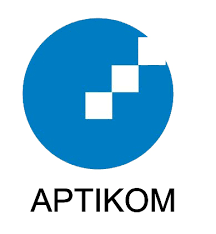Discrete Curvelet Transform Feature Extraction for Mangosteen Fruit Surface Damage Detection
DOI:
https://doi.org/10.18196/eist.v5i1.22602Keywords:
Discrete curvelet transformation, Feature extraction, Image processingAbstract
Mangosteen (Garcinia mangostana L) is one of the commodities of Indonesian fruit and is used as an export primadona that became the basis of Indonesia to increase the currency of the country. The quality of the fruit can be seen from the surface, whether there is damage or not. The sorting that the farmers have been doing all this time is still using the conventional way, that is, with the sense of sight. This conventional method seems to be less effective because it takes a lot of energy, takes a long time, and there are different perceptions between farmers. To solve this problem, a method of surface quality extraction of mango fruit will be developed based on image processing. The initial stage of image processing is with the image size equation then the image is converted to grayscale mode, then a discrete curvelet transformation is performed. The next stage is the extraction of mean, energy, entropy, standard deviation, variance, sum, correlation, contrast, and homogeneity. The result of the subsequent feature extraction is used to enter a value at the classification stage. From some of these extractions it will be known which extraction has the highest accuracy value. The method of classification used is Linear Discriminant Analysis (LDA) with the method of K-Fold Cross Validation which in this study is divided into 4-fold cross validation. After testing on 120 images, the highest value of accuracy is with extraction of standard characteristics deviation of 91.7% and variance of 88.4%.
References
Al-Marzouqi, H., & AlRegib, G. (2012). Curvelet Transform with Adaptive Tiling. School of Electrical and Computer Engineering.
Jianwei, M., & Plonka, G. (2010). The Curvelet Transform : A review of recent application. IEEE SIGNAL PROCESSING MAGAZINE.
Kazemi, F. M., Samadi, S., Poorreza, H. R., & Akbarzadeh-T, M.-R. (2007). Vehicle Recognition Using Curvelet Transform and SVM. International Conference on Information Technology (ITNG'07), IEEE.
Khoje, S. A., Bodhe, S. K., & Adsul, A. (2013). Automated Skin Defect Identification System for Fruit Grading Based on Discrete Curvelet Transform. International Journal of Engineering and Technology (IJET).
Kusuma, H. A. (2016). Introduction to Matlab Program Window. Retrieved 07 17, 2017, from Hollanda Cocobear: https://hollandakusuma.wordpress.com/2016/06/01/pengenalan-jendela-program-matlab/
Kusumaningsih, I. (2009). Color, Shape and Texture Feature Extraction for Animal Image Retrieval. Bogor: Department of Computer Science, Faculty of Mathematics and Natural Sciences, Bogor Agricultural University.
Nugroho, A. (2015). A prototype object following system for quadcopter using digital image processing. Yogyakarta: Electronics and Instrumentation Study Program, Department of Computer Science and Electronics, Faculty of Mathematics and Natural Sciences, Gadjah Mada University.
P, M. N. (2014). Utilization of Artificial Sparse Imagery for Sharpening Remote Sensing Imagery. Remote Sensing Data and Technology Center, LAPAN.
Prabha, S., & Sasikala, M. (2013). Texture Classification Using Curvelet Transform. International Journal of Advancements in Research & Technology.
Priyambodo, K. B. (2007). Study of Tranducer Pressure Force on Ultrasonic Wave Velocity in Mangosteen Fruit. Bogor: Department of Agricultural Engineering, Faculty of Agricultural Technology, Bogor Agricultural University.
Rahulkar, A., Jadhav, D., & Holambe, R. (2010). Fast Discrete Curvelet Transform Based Anisotropic Feature Extraction for Iris Recognition. ICTACT JOURNAL ON IMAGE AND VIDEO PROCESSING.
Simanjuntak, F. (2009). Digital Image Processing. http://digilib.ittelkom.ac.id/index.php?option=com_content&view=article&id=73:pengolahan-citra-digital&catid=15:pemrosesansinyal&Itemid=14.
Taufiq, I. H. (2010). Analysis and Implementation of Content Based Image Retrieval Using Curvelet Transfrom Method. Telkom University Bandung.
Taufiq, I. H., Adiwijawa, & Wirayuda, T. A. (2010). Analysis And Implementation Of Content Based Image Retrieval. Informatics Engineering, Faculty of Informatics Engineering, Telkom University.
Thielicke, W., & Stamhuis, E. (2014). PIVlab – Towards User-friendly, Affordable and Accurate Digital Particle Image Velocimetry in MATLAB. Software Sustainability Institute Journal of Open Research Software.
Weisstein, Eric W. (1999). Retrieved 07 31, 2017, from WolframMathWorld: http://mathworld.wolfram.com/Sum.html



